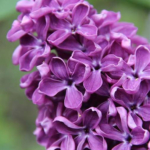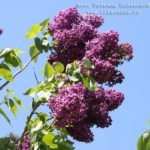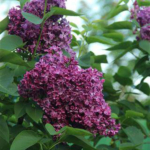Fiala, 1984
‘Arch McKean’, S. vulgaris
Fiala 1984; S VI
syn. – ‘Archibald McKean’
{‘Agincourt Beauty’ × ‘Rochester’}
Fiala, Lilacs, 102, 223 & Pl. 82 [1988]; Vrugtman, HortScience 24(3):435 [1989]; Photo on Jorgovani/Lilacs 2015 DVD.
Named for Arch McKean, 189?-2003, Grand Beach, Michigan, USA.
cultivar name registered 1988; name established and accepted.
Международный регистр названий культиваров рода Syringa L.
Syringa vulgaris L. ‘Arch McKean’, Fiala 1984. Registered 16 Dec. 1988. Raised from seed collected from S. v. ‘Agincourt Beauty’ (pollen parent: S. v. ‘Rochester’) and selected in May 1984 by John L. Fiala. Name, description and color photograph published in: Fiala, J.L. 1988. Lilacs, the genus Syringa. Timber Press, Beaverton, Ore. pp. 102 and 223, pi. 82. Introduced commercially in 1988 by Ameri-Hort Research, Inc., P.O. Box 1529, Medina, Ohio 44258, USA. Florets single; bud color (Horticultural Colour Chart 1939/41 R.H.S.): Garnet Lake 828/2 to Beetroot Purple 830/1; open floret color: Beetroot Purple 830/3 to 830/2. Flowers a brighter red-purple than ‘Frank Paterson’. Florets 2 to 3 cm in diameter in very large upright thyrses. Foliage dark green, disease-resistant. Plants of moderate height, to 2.5 m, practically nonsuckering, floriferous.
Lilac Registration 1988. Freek Vrugtman, Royal Botanical Gardens, Hamilton, Ontario, Canada
Syringa vulgaris ‘Arch McKean’. Fr. J. L. Fiala. Ohio, 1984 S VI
The late Fr. Fiala must have been filled with intense anticipation when he crossed ‘Agincourt Beauty’ with ‘Rochester’. The thought of what might happen to those huge red-violet florets with the four whitish spots between the vee-junctions of the floret lobes should have filled him with chuckling delight.
The result is interesting. The buds are a deep red-magenta. This color is held by the medium sized florets (about 2cm) which have lobes that are proportionately longer and a little narrower than in either parent. As the flower ages, the margins become paler until eventually those little white smudges finally appear. What is truly distinctive about this cultivar is the health and vigor which gives it a majestic form and beautiful dark tone. It has a fine green leaf, a strong, upright habit and is one of the few lilacs which look better from a distance than close up. The Norman’s Farm collection is planted geographically so it stands close to ‘Adelaide Dunbar’, and when the two come into flower they take the garden by the throat. I never met Arch McKean but I do have the honor of holding his award. I have frequently called upon his generous endowment, which allows us to print color photographs on the covers of this Journal. With this lilac I am also gladly compelled to remember him “with ever returning Spring”.
COLIN CHAPMAN, Lilacs Volume 30 Number 2 Spring 2001




Оставить комментарий
Пожалуйста, зарегистрируйтесь, чтобы иметь возможность оставлять комментарии.